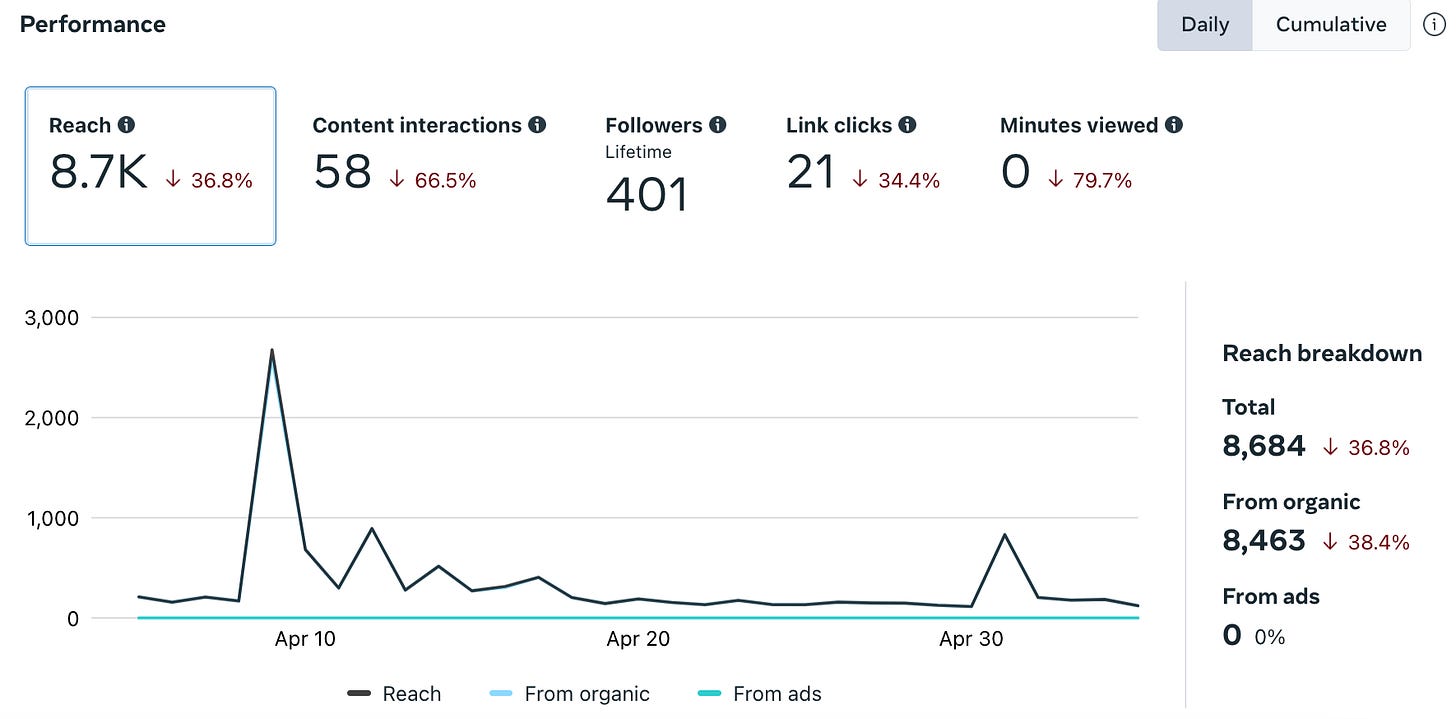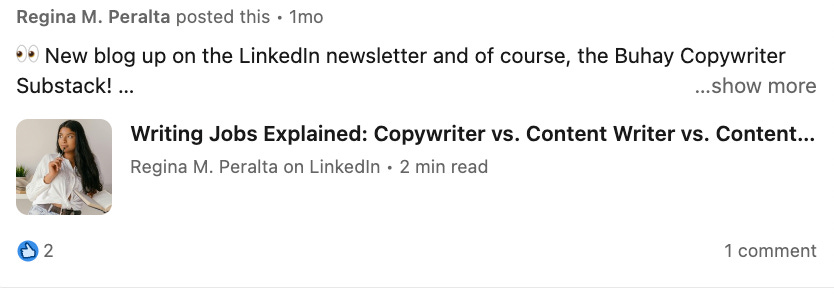How to Do a Content Audit and Retrospective to Improve Your Copywriting
Add a bit of strategic flair to your creative spark!
POV: You’ve been churning out content for your client’s social media channels, or building your personal brand post-by-post. It’s been at least three months now, and you’re either:
a) getting the results you want, and you want more;
b) not getting the results you want
c) plateauing in terms of performance
So, how do you level up your copywriting process? Creative headlines and trendy post ideas can get you far, but if you use your learnings from your current content to have more pointed copywriting and content? Fireworks.
In this post, I’ll walk you through how to do a simple content audit, and how to make your next steps easy to follow through a cool little retrospective framework.
Lessons from your past self aka the importance of a content audit
Siri, play “I Can Fix Him (No Really I Can)”.
Jokes and hugot about writing aside, you can use your past output to learn more about your brand, your audience, and how to improve.
A content audit helps you identify things like:
Top-performing content whose angles or executions you want to replicate
Low-performing content you should axe (or invest less time and effort in)
The gaps between what your audience wants to learn, and what your brand is currently sharing
Opportunities to engage or convert more of your audience
Your content audit and retrospective can apply to anything from your client’s social media channels, your own Substack blog, or even your website portfolio.
If you have a media/analytics team in your company, I strongly recommend working with them throughout this process. They can provide tons of insights and even suggest how to better recalibrate your content. But rest assured, even as a solo copywriter, you can do a lot with just a simple audit and framework.
How to perform a content audit
For today’s post, I’ll be using analytics from Buhay Copywriter’s assets.
I’ll try to keep everything as laymanized and bare-bones as possible, since I am not the best numbers person in the world - merely someone who once had to review media reports and make strategic decisions based on them, too 👀 For my number-savvy, report-savvy friends here, please understand that this is a middle ground 😅
Define your goal/s.
Do you want more followers? A bigger reach? More conversions?
Primary goal: more subscribers on my Substack and LinkedIn newsletters
Secondary goals: improved open rates for my newsletter; greater reach on my Facebook page
Go through each channel’s analytics.
These include your Facebook, Twitter/X, Instagram, YouTube, TikTok, Google Analytics, WordPress, Substack, etc. Make sure you use the same time range as reference.
Here’s what my stats currently look like. Since LinkedIn doesn’t have a 30-days feature, I chose 28 days. I customized the Facebook range to April 5-May 5 (since May 5 is the latest date with data).
Substack: I saw an increase in subscribers, followers, and views, but a decrease in open rate.
LinkedIn: I saw an increase in subscribers, though it wasn’t as fast as the increase of the prior period. Article views decreased as well. The peaks and troughs correspond with my publishing dates for each article.
Facebook: Reach, content interactions, and link clicks decreased after a bump around April 10.
Identify top-performing assets and assess what made them work.
Since I have Substack articles, LinkedIn articles that are previews of Substack, and posts on Facebook and LinkedIn, I will have 3 categories for top-performing assets for the past 1 month.
Substack:
The Substack article with the highest open rate for the past 30 days (38%).
The Substack article with the most views and number of subs for the past 30 days (172 views) (3 additional subscribers).
The LinkedIn (leading to Substack) article that drove the most article views for the past 30 days (64 views).
The LinkedIn (leading to Substack) article that drove the most number of new subs for the past 30 days (4 new subscribers).
The Facebook post that had the most impressions, reach, and link clicks for the past 30 days (3k reach, 3k impressions, 15 link clicks).
The LinkedIn post that had the most impressions for the past 30 days (782).
The LinkedIn post with the most engagements for the past 30 days (7).
Based on these top-performers, we can see that:
Substack subscribers/audience like career-oriented content (since they subscribed to Buhay Copywriter).
LinkedIn readers like career- and advocacy-related content.
Facebook’s audience likes the Substack-generated square images and the anecdote in the caption (my sharing this to Mad Men-related groups might have helped, too).
LinkedIn’s audience likes how-to content.
Identify assets with the lowest performance and assess why they didn’t work.
Repeat step #3, but look for those assets that got the least reach, impressions, engagements, or conversions.
This Substack post got the lowest open rate and views count over the past month (22%) (66 views).
And so on, and so forth!
How to prepare a Start-Stop-Continue retrospective framework
Once you’ve done your content audit, it’s time to create a Start-Stop-Continue list. This helps you make sense of all the little notes, blurbs, and insights you’ve gathered throughout your content audit.
Given the example above plus other insights I gathered, we can list the following under each category:
Start
Using Substack-generated images more
Stop
Creating too much advocacy-related content unless tied into copywriting
Using lengthy email subject headlines
Using text-heavy blurbs to promote articles on Facebook and LinkedIn
Continue
Having more career-oriented and how-to content in the content strategy
And just like that, you have a list of easy-to-follow next steps for your next round of copywriting work.
By doing this process regularly, you can level up your copywriting and content strategy skills and grow your brand. Good luck!
Will you be trying this content audit and Start-Stop-Continue framework soon? Have you tried it before? Let me know in the comments section!
Buhay Copywriter by Regina Peralta is free today.
But if you enjoyed this post, I’d love it if you would:
- Share this post with a friend or two. It helps grow our little community, plus your friends get all the cool insights and lessons you got from this newsletter, too!
- Send a tip via my Ko-fi account or my Buy Me a Coffee account. While writing in itself motivates me, bills are a pretty good motivator, too!















Thanks for this inspiring post ❤️